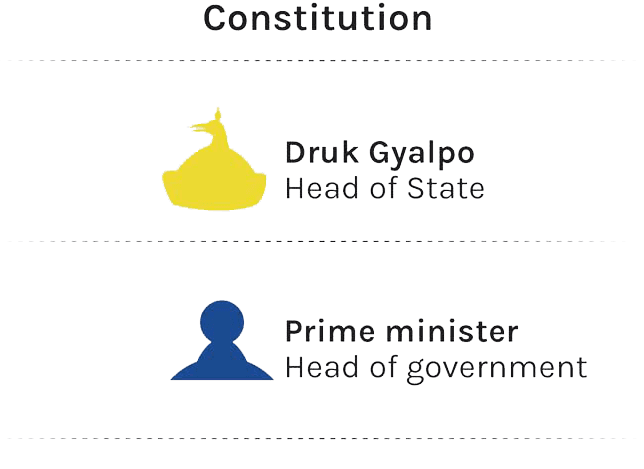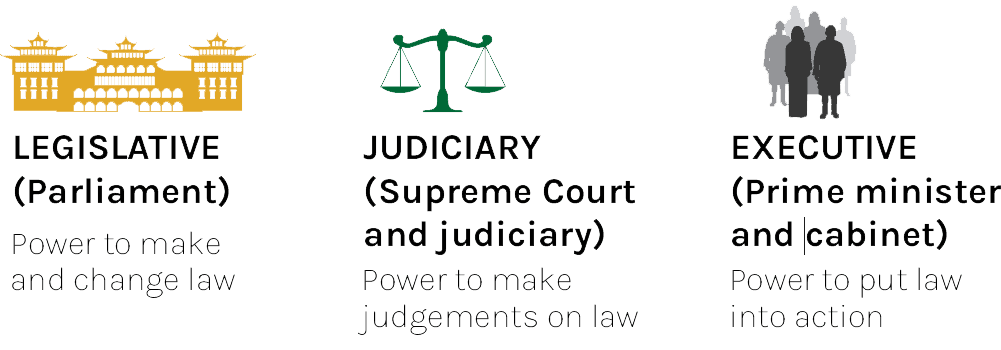System of Government
Democratic Constitutional Monarchy
Since 2008, Bhutan has been a Democratic Constitutional Monarchy with the Druk Gyalpo as the head of the state and the existence of multiple political parties. In a Constitutional Monarchy, the Monarch exercises authority in accordance with the Constitution. Executive power to run the country is with the Council of Ministers or Cabinet (Lhengye Zhuntshog) headed by a Prime Minister, who is the head of government. Power to make and amend laws and make decisions for the nation lies with the bicameral Parliament, consisting of the Druk Gyalpo, the National Council, and the National Assembly.

Branches of Government

The principles for democratic governance in Bhutan are enshrined in the Constitution. The country's government is structured around three separate branches — the Legislature, the Executive, and the Judiciary — modeled after the Westminster system of the United Kingdom.
The Legislature (Parliament) debates and passes laws. The Executive branch — the elected government — implements these laws, while the Judiciary interprets and applies them through the courts. This separation of powers is known as the system of checks and balances, ensuring that no branch can dominate the others.

